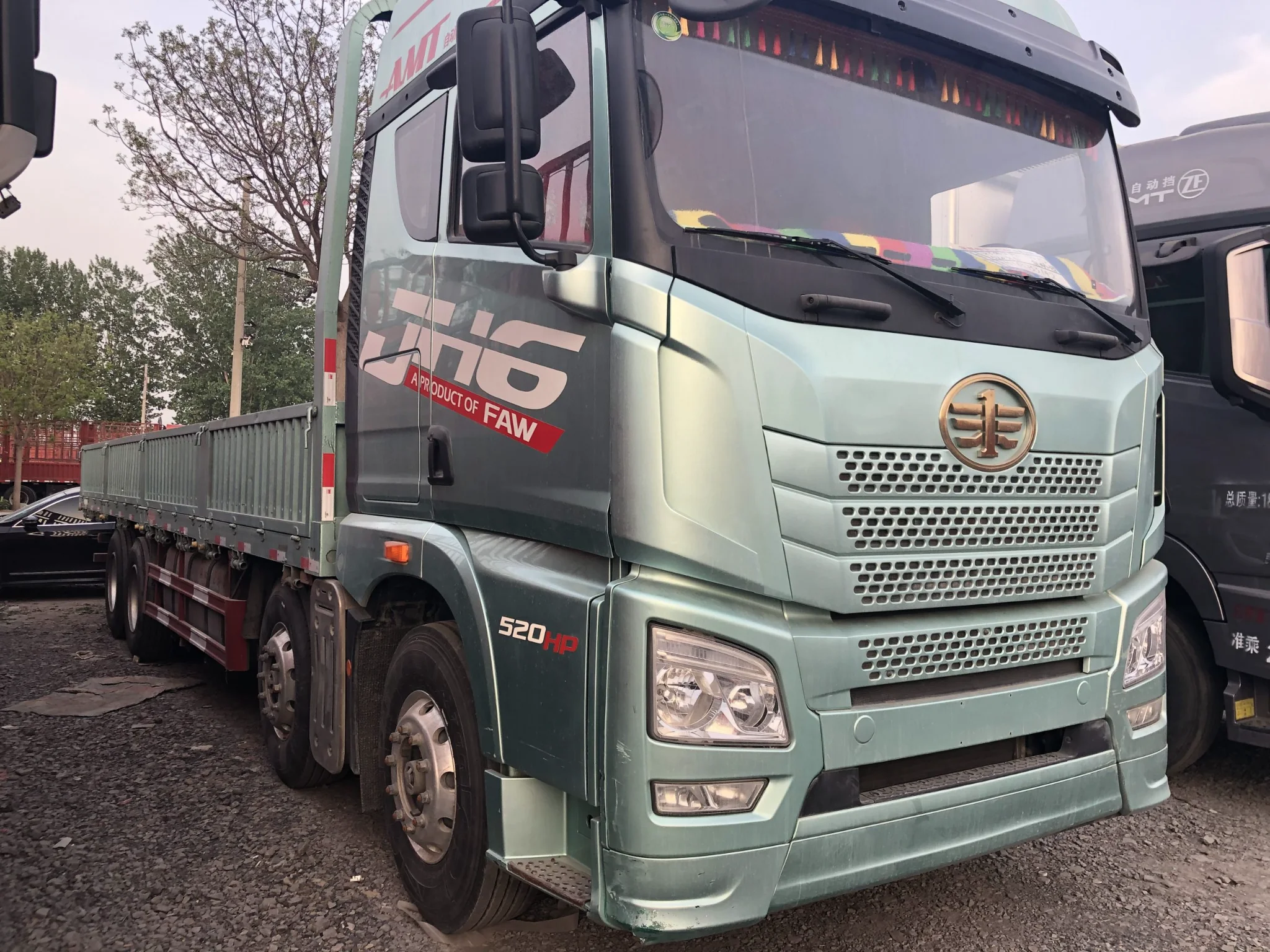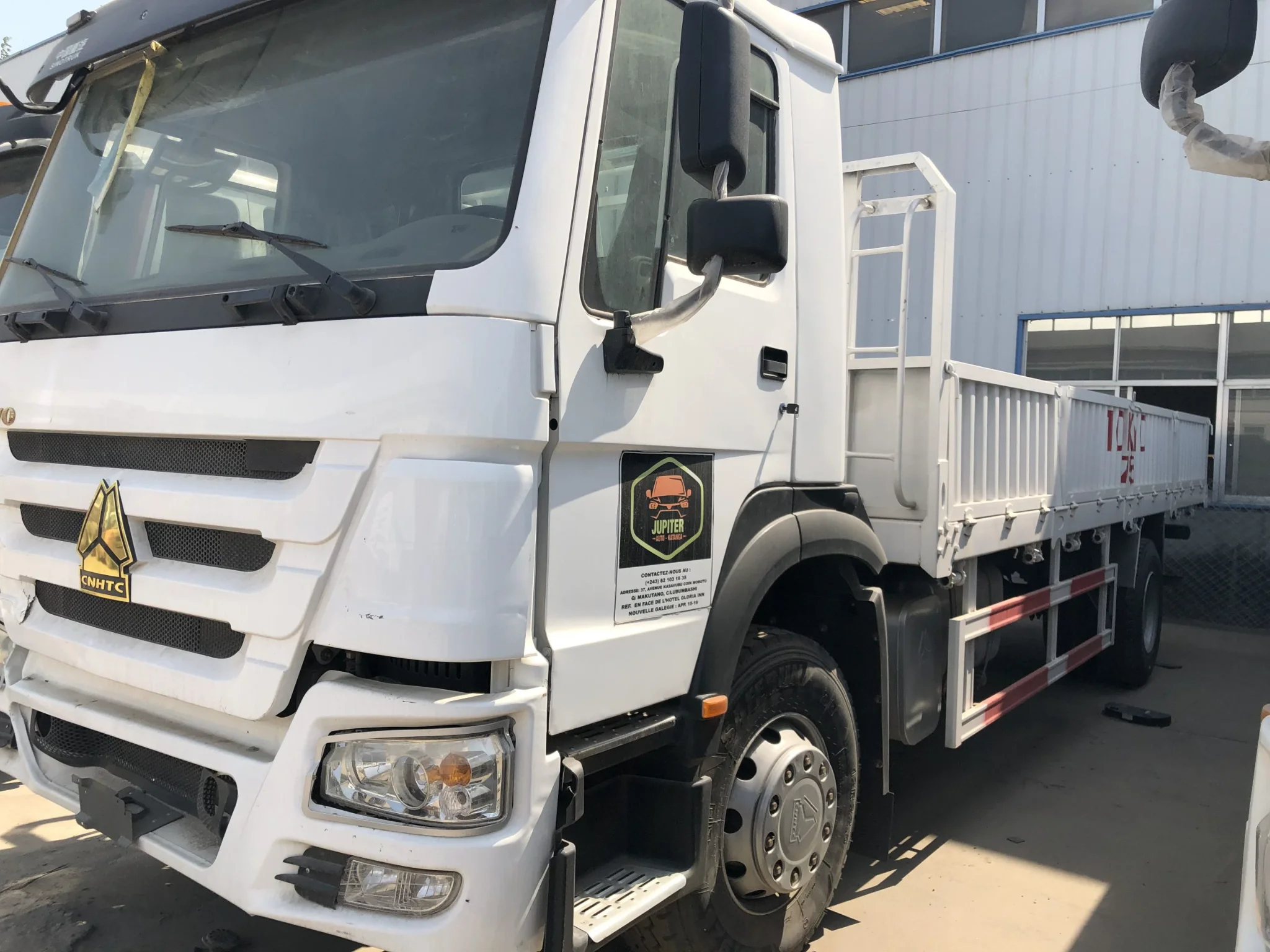Inspection Checklist for Used Flatbed Trucks: Avoid Buying a Lemon

Buying a used flatbed truck should help your business, not drain it. The truck might look clean, fresh paint, “ready to work,” but hidden problems in the frame, brakes, or hydraulics can turn it into a money pit. A proper used flatbed truck inspection protects you from that. Think of this as a practical used truck buyer guide you can take to the yard.
Why Pre Purchase Inspection Matters
Flatbeds are worked hard — construction sites, heavy cargo, uneven roads. They haul steel, machinery, timber. Some were overloaded, some ran nonstop, some lived in salt and rain. On the surface they might look fine. Underneath, not always.
Skipping inspection usually shows up later as:
-
Frame cracks or bad welds
-
Suspension wear causing unsafe handling
-
Brake or hydraulic issues under load
If you’re exporting the truck for work in another country, a breakdown on arrival is not just annoying. It stops the job.
Exterior And Frame Inspection
Your flatbed truck checklist starts outside. Don’t just “look for scratches.” You’re looking for structural risk.
Frame, Rails, And Crossmembers
Check the frame rails, crossmembers, mounting points. Look for:
-
Deep rust or scaling (not just surface orange)
-
Cracks
-
Fresh welds in stress areas
Repaired or bent frame = possible accident or overload. That affects payload and safety. If you see cracks near suspension hangers, that’s a major red flag.
Deck And Tie-Downs
Check the flatbed platform. A steel deck can warp or bow. A wood deck can rot, split, or soak in oil. If the deck flexes under your weight, that surface may not safely hold equipment.
Look at side rails and tie-down points. Bent or torn anchor points usually mean heavy straps and rough handling. Fresh paint only on one section of the bed may be “coverup,” not “repainted for you.”
Tires, Suspension, Undercarriage
Check tire tread across the width, not just the outer edge. Uneven wear can signal alignment or suspension trouble.
Look under the truck at springs, air bags, hangers, brackets. They should sit tight, not sloppy. Loose suspension on a heavy flatbed is a stability issue.
Quick reference:
| Area | Check For | Red Flag |
|---|---|---|
| Frame / Chassis | Cracks, heavy rust, new welds | Fresh weld near suspension mount |
| Flatbed Platform | Warp, rot, loose boards | Deck flexes when stepped on |
| Tie-Down / Rails | Bent hooks, torn anchor points | Missing tie-down points |
| Tires / Suspension | Even wear, tight hardware | One-side bald tire wear |
Two or more red flags? Slow down.
Engine, Transmission, And Brakes
Looks don’t pull weight. Powertrain does. This part of the used flatbed truck inspection matters if you want the truck to actually move freight.
Engine
Check for:
-
Oil leaks
-
Coolant that looks dirty or milky
-
Burnt smell
-
Excess smoke on startup
Listen at idle. The engine shouldn’t shake hard or hunt for RPM. Strong burnt smell under the hood is not “normal for old trucks.” It’s a problem.
Transmission
Shift through all gears on a test drive. Watch for:
-
Slipping
-
Harsh grinding
-
Delay going into drive or reverse
Slow engagement or banging shifts can mean internal wear. Also check for fluid leaks on the housing. A wiped-clean wet area can mean someone hid a problem.
Brakes And Air System
On heavy work trucks, brakes are non-negotiable. Check pad or shoe thickness, scoring on rotors or drums, and air lines (on air brake systems). Air lines should not hiss constantly or show dry cracks. Air loss on the road can put you on the shoulder fast.
Electrical, Hydraulics, And Loading Gear
A flatbed truck isn’t always just a bed. Some units come with ramps, lift gates, tilt functions. Those can help your work — or add repair cost.
Lights And Wiring
Test headlights, brake lights, reverse lights, signals. Bad lighting gets you stopped. Watch for melted connectors, taped-over wires, weak battery connections. Electrical gremlins are cheap to hide and expensive to chase later.
Hydraulics
If the truck has a hydraulic lift, tilt bed, or loading system, run it fully. It should raise, hold, lower smoothly. Leaking hoses, jerky movement, or a burnt hydraulic smell means future downtime and parts cost. If the seller says “it just needs fluid,” assume repair cost and factor it into your offer.
Cabin Check
The cab tells a story. Check:
-
Seat belts
-
Warning lights on the dash (ABS, brake, check engine)
-
Gauges: oil pressure, coolant temp, air pressure
-
A/C and heat
If every warning light is on, that’s not “all trucks do that.” That’s an invoice. A destroyed interior can also mean the truck wasn’t cared for anywhere else, either.
Documentation And Test Drive
A good used truck buyer guide always includes paperwork.
Vehicle History
Ask for the VIN and service history. You’re looking for:
-
Maintenance records
-
Major part replacements
-
Accident notes
-
Odometer consistency
No records at all usually means more risk. Price should reflect that.
Test Drive
Drive it. Even if it’s just around the yard.
Watch for:
-
Steering pull
-
Vibration at steady speed
-
Slow brakes
-
Throttle delay
Listen for knocking from suspension or banging from the bed. A working flatbed should feel planted, not loose and scary.
Red Flags You Should Walk Away From
Some issues you can fix. Some are deal-breakers. Deal-breakers include:
-
Cracked or re-welded frame rails
-
Milky oil or coolant mix
-
Air brake leaks that don’t stop
-
Hydraulic lift that can’t hold weight
-
“No maintenance records available”
At that point, you’re buying problems, not buying a truck.

Introduction to Liangshan Tuoda International Trade Co., Ltd.
One more factor matters: who you’re buying from. Especially for export buyers who can’t always fly in and crawl under every unit by hand.
Liangshan Tuoda International Trade Co., Ltd. supplies used commercial trucks, including used flatbed trucks prepared for work use and for export. The focus is not just listing inventory. Vehicles are matched to hauling jobs — construction materials, machinery transport, general cargo — and inspected for key items like frame condition, brake function, suspension, and loading systems before shipment. The company also supports buyers who need help with transport and documentation after purchase. For a buyer who can’t personally road test every truck, that kind of pre-check reduces the risk of receiving a unit that can’t go to work.
Conclusion
A flatbed truck can be a smart purchase if it’s solid. It can also quietly destroy your budget if it’s not. Use the flatbed truck checklist above every time you’re looking at a unit: frame, bed condition, suspension wear, engine health, brakes, hydraulics, paperwork, drive feel.
If the seller can’t answer basic questions or won’t provide records, that’s already an answer.
FAQ
Q1: What should get checked first in a used flatbed truck inspection?
A: Start with the frame and undercarriage. Cracks, new welds in stress points, or heavy rust are major warning signs. If the structure is weak, walk. This is step one in any serious how to inspect used truck process.
Q2: Why do maintenance records matter so much?
A: Service logs and VIN history show how the truck was treated. Missing records mean guessing. A solid used truck buyer guide will always tell you to review repair history before paying.
Q3: How can you test hydraulic or loading systems on a flatbed?
A: Cycle the lift, tilt, or ramp under some load. Watch for leaking hoses, slow lift, or jerky motion. If it won’t hold, note that on your flatbed truck checklist and factor repair cost in.
Q4: What during a test drive says “don’t buy this”?
A: Hard steering pull, brake delay, heavy vibration at cruising speed, or multiple dash warning lights that stay on. Those are red flags for safety and reliability.
Q5: Does buying through an exporter help if the truck is going overseas?
A: Yes. A supplier like Liangshan Tuoda International Trade Co., Ltd. can confirm frame condition, brakes, and basic roadworthiness before shipment, so you don’t receive a lemon that can’t legally or safely run when it lands.


